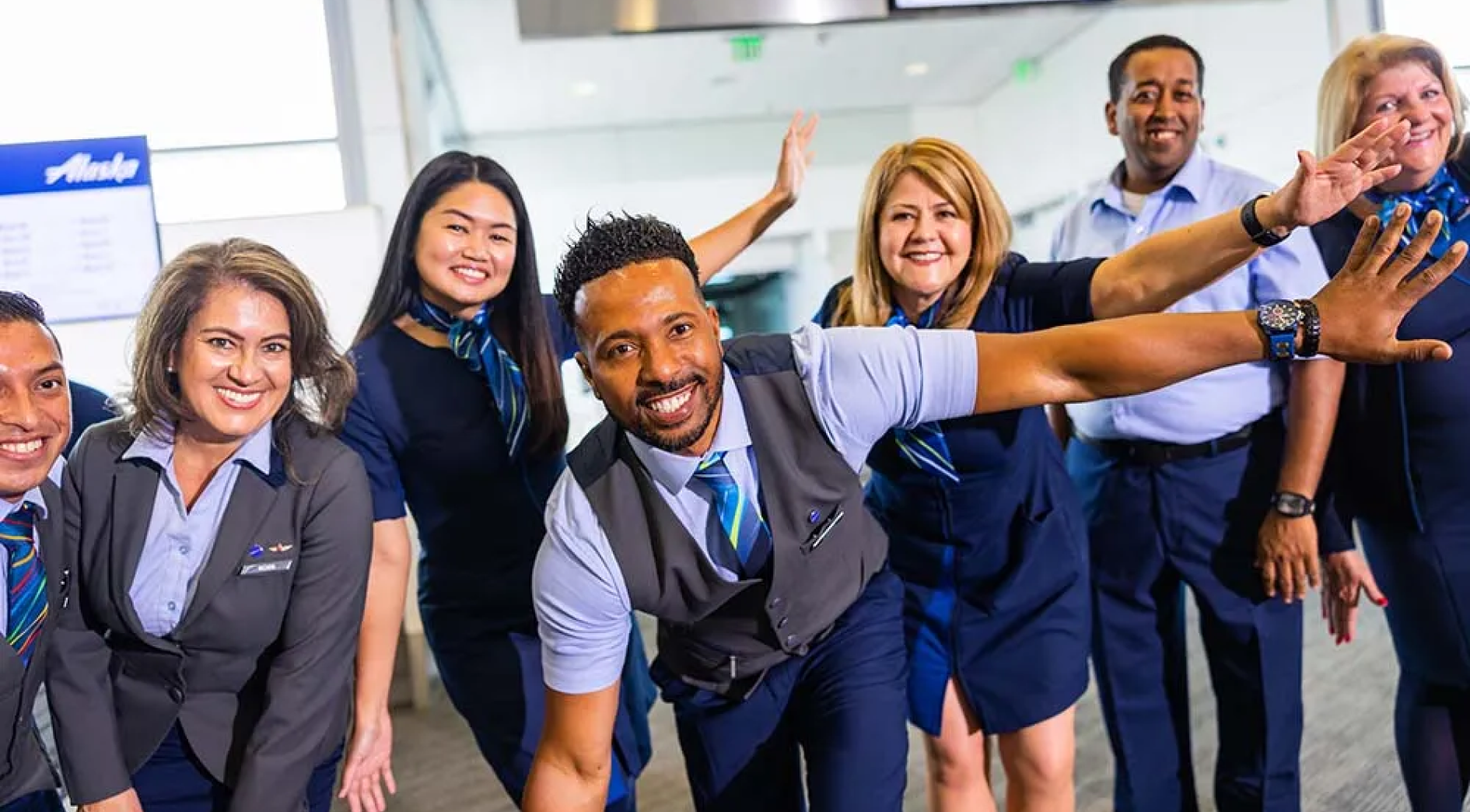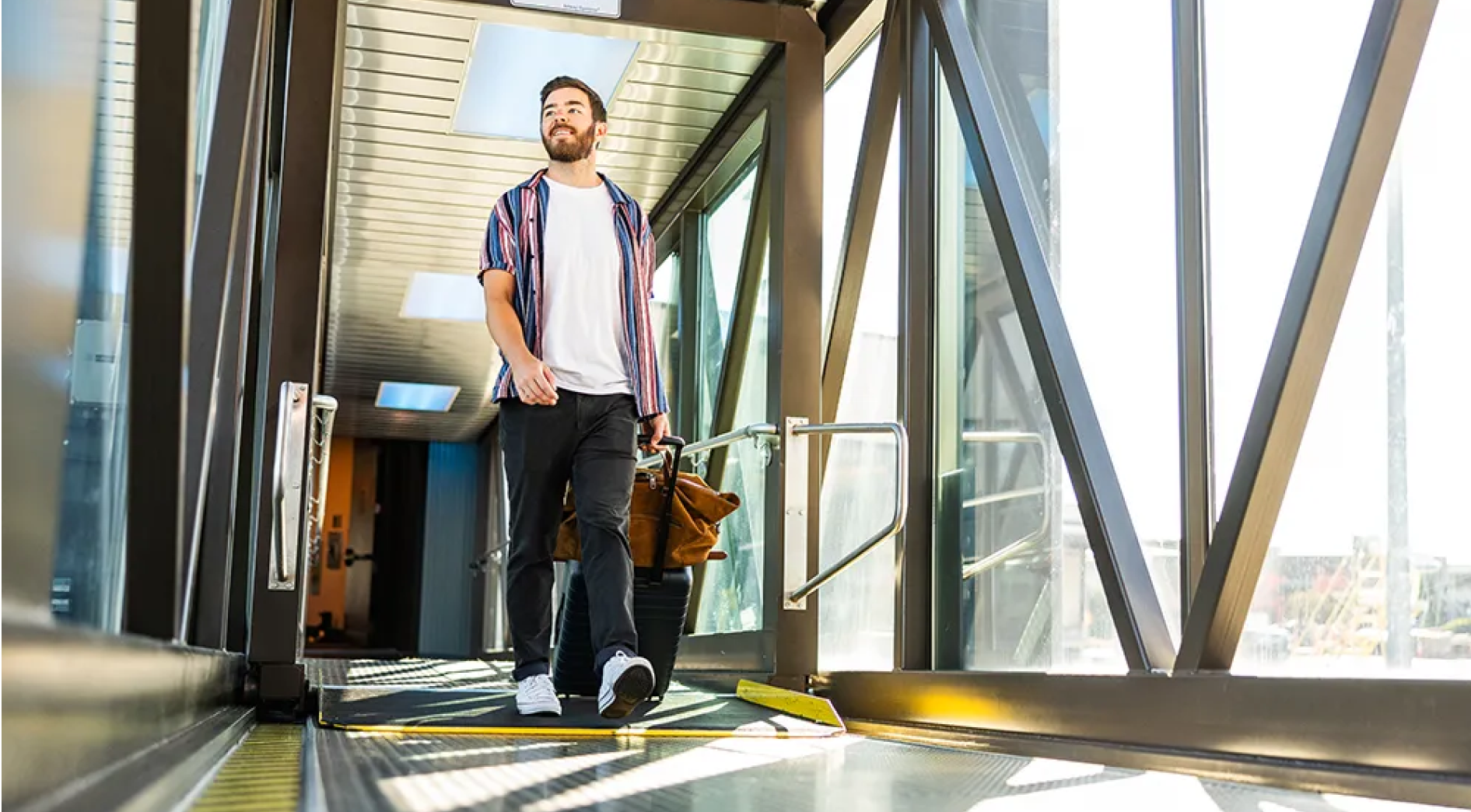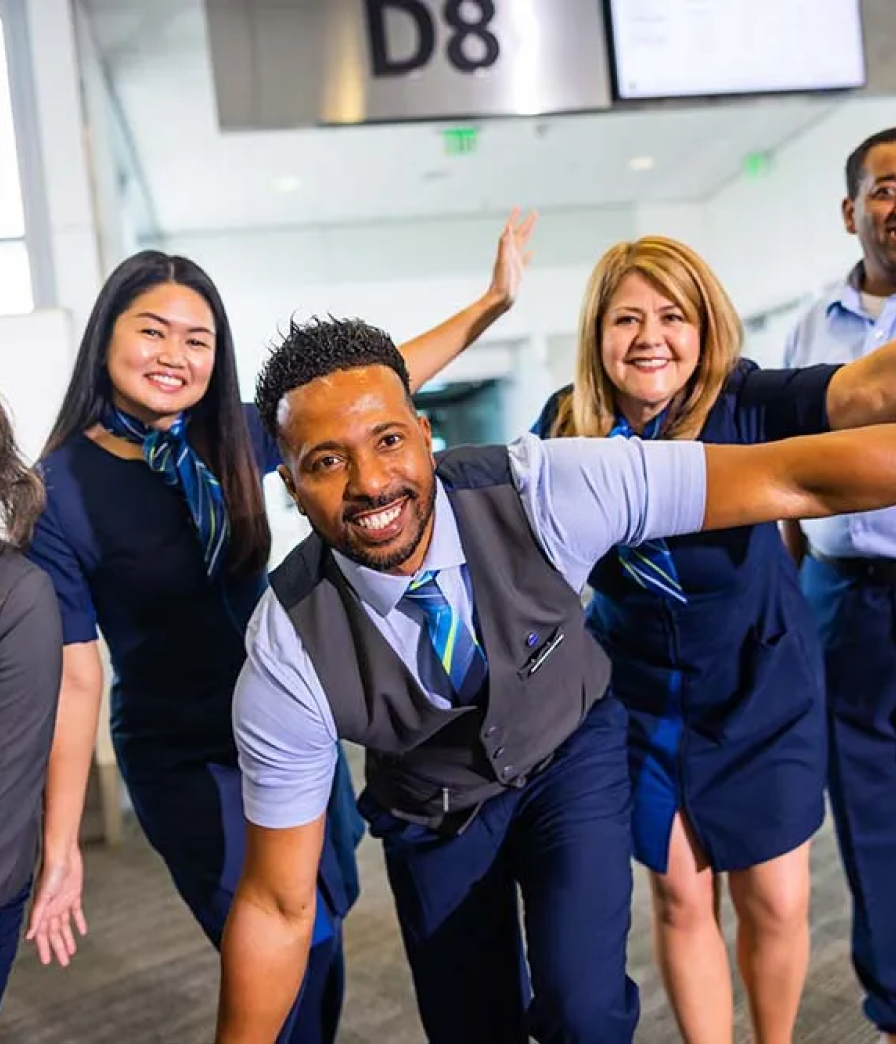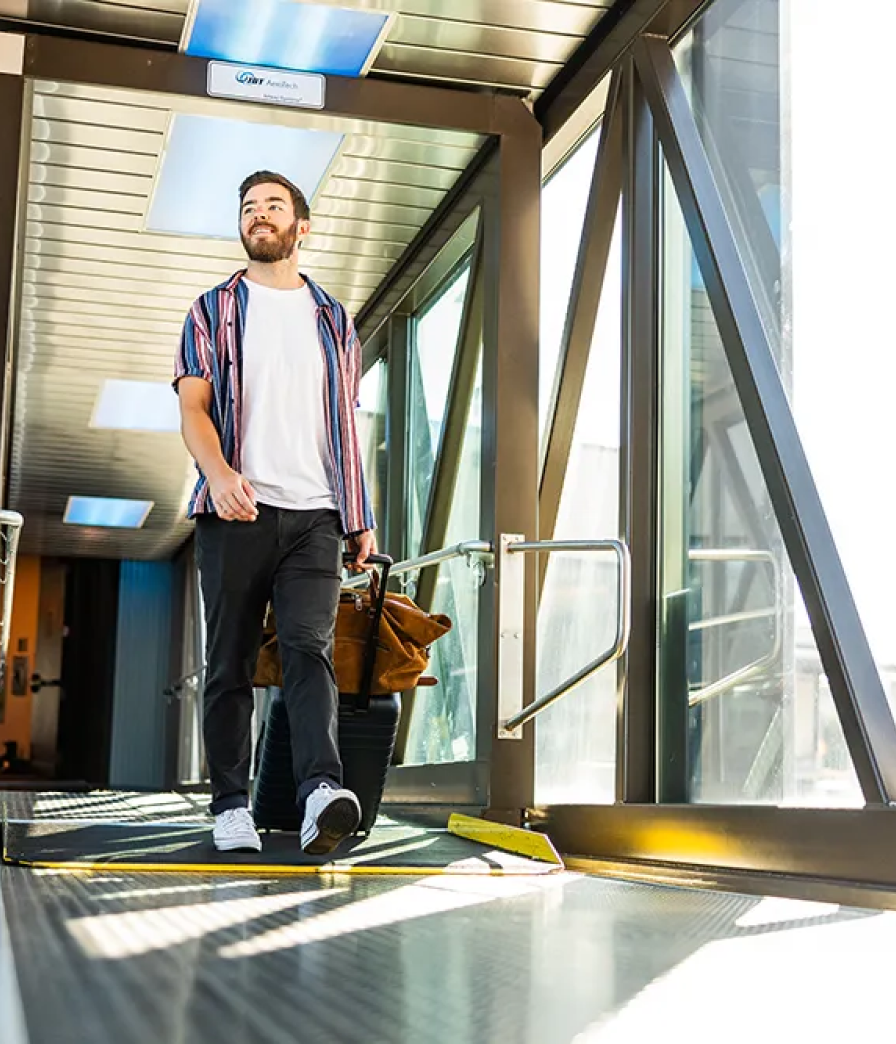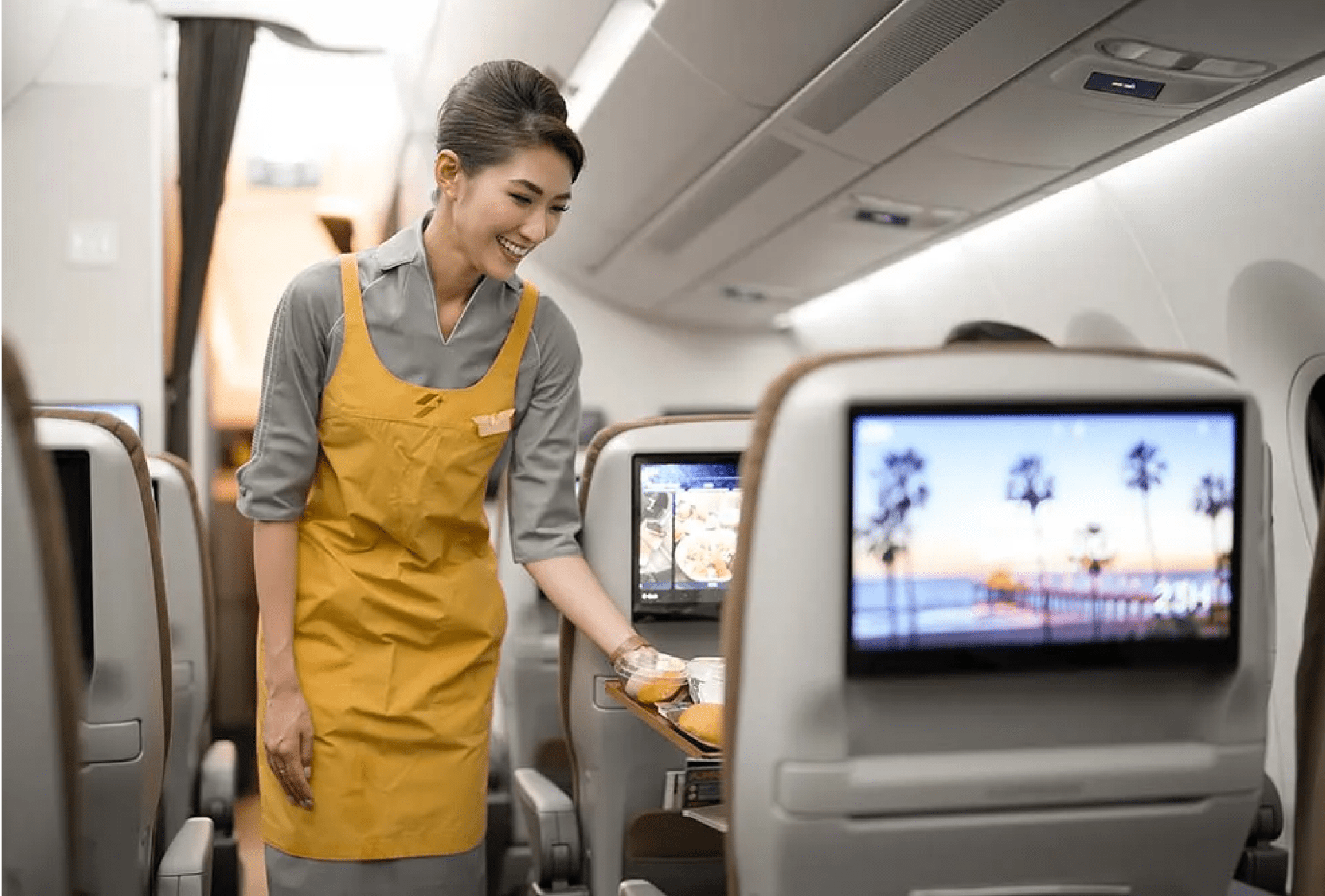Experiencing the eclipse at 35,000 feet: How two Alaska Airlines dispatchers made it happen
Share

Guests aboard Alaska Airlines Flight #322 from San Diego to Dulles were treated to front-row seats for Monday’s total eclipse. Guests donned eclipse glasses and peered through their windows to witness this rare celestial event, which won’t happen again in the United States until 2044.
But the timing was no coincidence.
“This was the first I had piloted during a solar eclipse, and I actually retire in 2040, so being in the front row was right at the top of the list for some of the best experiences I’ve had in the sky,” said Scott Bunch, Alaska Airlines first officer for Flight #322. “It was great teamwork from everybody involved. We had excellent dispatching that provided a route to keep the aircraft on the path of totality. Not only did we go through the darkness from the moon passing in front of the sun, but we also stayed in it. I was ecstatic.”





Solar eclipse chasers had long booked their flights along the path of full totality to watch from the ground. Many of Alaska’s flights to Austin, Dallas, San Antonio and Mazatlán, Mexico had sold out in advance. To respond to the increase in demand, we added flights to Texas and Mexico—destinations that were projected to have the longest duration of totality.
Video by Kane Andrade & Ingrid Barrentine
How we made it happen.
Unlike in 2017, when Alaska chased the Great American Eclipse with the help of a team of pilots and an astronomer, there was no elaborate flight planned out to give guests a view from the sky.
When excitement began building ahead of the April 8 event from guests and media, Joe Demory, director of dispatch at Alaska Airlines, started looking into which flights we already had on the schedule that would likely give guests the best seats in the house.
“We started with basic research by comparing our flight schedule with the eclipse path,” said Demory. “I was able to identify two flights out of San Diego—one to Boston and the other to Dulles—that would give us the best chance of following the eclipse path for the longest period of time.”
But Demory knew weather, air traffic control (ATC) and other factors out of our control could delay the flights and miss the eclipse altogether.
Knowing guests would be disappointed if they didn’t get to watch the moon obscuring the view of the sun, Demory asked veteran Alaska chief dispatchers Ed Fischer and Eric Juchartz to help plan the best flight path for the pilots that day.



Planning the path to totality.
“We had a small window of time to make this all work, especially for full totality that everyone wanted to see—you want to watch the full eclipse, not the partial,” said Juchartz. “I started with Google Earth, which had an eclipse overlay, so that was kind of cool.”
It took him about an hour to use different technology and software to map out the best route for both flights. It would mean flying farther south than typical flights to Dulles and Boston.



On the day of the eclipse, Fischer (who used to navigate aircraft for the U.S. Airforce) reviewed Juchartz’s flight paths and made small adjustments back at Dispatch. In his role as dispatcher, Fischer communicated with our pilots the entire flight to make sure they got to their destination safely and didn’t miss the total solar eclipse.
“We were probably going to intercept it somewhere around Indianapolis is what I guessed, and it was going to be dependent on how strong the winds were and when we actually took off,” said Fischer. “I emailed the crew a list of the eclipse times along their route so they could see about what time they were going to be at different points and then pass it on to our passengers.”
Dispatch makes it happen for every flight.
Alaska Airlines dispatchers played an indispensable role in orchestrating this special flight for our guests while also overseeing the coordination of all our daily flight operations, ensuring unwavering commitment to safety, efficiency, and adherence to regulations for every flight.
“It was right over Missouri, just shy of the border of Illinois, that we actually got the full eclipse, it was awesome,” said Nick Mentzen, captain at Alaska Airlines, who piloted flight 322. “ATC gave us permission to fly at a lower altitude and do a series of ‘s-turns’ to give our guests on both sides of the plane to get a view, first to the right then followed by a turn to the left and that’s when we actually got the full eclipse.”
It just goes to show the level of expertise and professionalism within our team; whether people realize it or not, every flight is receiving that oversight from our dispatch work group to make sure our guests get from their origin to destination safely and efficiently,” Demory said. “Monday was our opportunity to shine and highlight some of the things that we do behind the scenes on a daily basis.”







